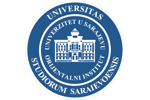Orthographic Improvement of Our Arabitsa in Printed Papers - Influence of Ideas of Vuk Karadžić
Abstract
The present study discusses the potential value of Arabic writing in relation to the processes undergone for the needs of other languages, which adapted Arabic writing to their phonetic systems (Persian, Ottoman Turkish, Mghan, etc.), as well as in relation to the Aljamiado writing tradition within the Serbo-Croat language. In this respect, inovations are brought about by additional diacritics rather than by inventing new letters. Consequently, the author divides the existing Arabic writing system into two types of graphemic signs: primary and secondary. Letters of the Arabic alphabet (obligatory signs) fall into the primary type, while vocalization signs (optional signs) fall into the second type. Some adaptive processes led to very specific combinations of these two types of graphemes, including the adaptive processes within the Serbo-Croat Alhamiado writing as well.
As soon as arabitsa (arabic alphabet) transferred from manuscript into printed form at the beginning of the 1860's, the question of its appropriate ortograp hic standard was raised. In all attempts to reform arabitsa, solutions were sought for to overcome the basic contradictions which appear when adopting the Arabic writing system for the Serbo-Croat language:· marking ofvocals by secondary and primary graphemic signs, insufficiency in consonant marking, treatment of initial as wel as of medium consonant groups, vocalic „r“, hyphenation of words. All these attempts appeare at the time when the orthographic ideas of
Vuk Karadžić were already being applied in Bosnia and Herzegovina in written and printed Cyrillic texts and were reflected in Latin writings as well. Direct and everyday contacts with Cyrillic and Latin writings presented an exsample which arabitsa was to achieve. Although the search for new and better solutions did not follow the same directions and was not always ot the same importance, all these solutions reflected, to a certain extent, the incentives of new orthographic ideas which had already spread throughout the Serbo-Croat area.



